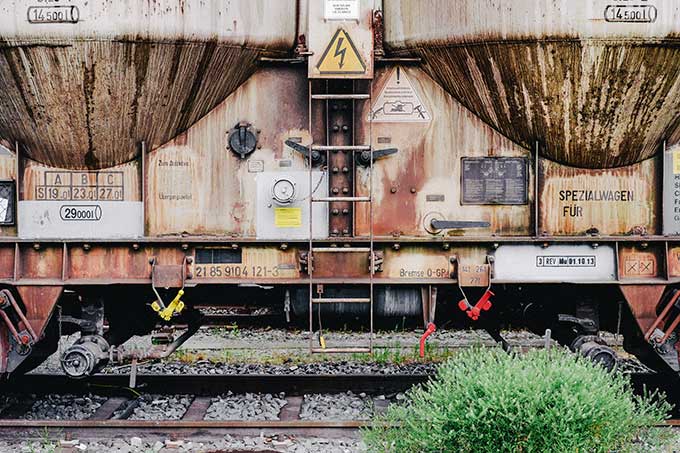ASTM B117: The most popular accelerated metal corrosion test standard
ASTM B117 Standard – A protocol for operating the Salt Spray (fog) Apparatus
At Micom Laboratories, the most requested accelerated corrosion test is the ASTM B117 standard. The ASTM B117 provides guidelines for operating the Salt Spray (fog) Apparatus, which is able to create a highly controlled corrosive environment for testing metals and coated metals samples under various conditions.
Salt spray testing, one of the many accelerated aging tests offered by Micom, is used to simulate on an accelerated basis different real life outdoor conditions. This corrosion test was initially published by ASTM International in 1939 and has since quickly gained worldwide recognition.
Corrosion, also often incorrectly referred to as “rust”, plays a significant role in many industries both from a design and maintenance perspective. For the record; rust pertains exclusively to the Iron oxidation process.
Corrosion effect on product structure
If we consider the Aerospace industry, corrosion of materials in commercial or military aircrafts, for example, can lead to devastating results. Even slight degradation of metals when exposed to harsh or fast changing atmospheric conditions can become lethal to the aircraft and the crew on board. Structural strength of materials and their ability to withstand rust over long use cycles become a critical element to consider.
Corrosion effect on product esthetics
For some industries like the automobile industry, corrosion affects more the esthetic aspect of the final products. Metal parts in cars and trucks are also subject to the effects of different climate exposures (rain, heat, sun, snow, salt on the road, etc.,). However, when compared to the Aerospace industry, metal deterioration in cars will not likely result in fatal accidents but instead affect the monetary value of the product. In this case, and more specifically when rust is visible on the body of the car, the effect of electrochemical oxidation of metal or corrosion will decrease the resale value of the car and will likely contribute to a lower customer satisfaction with the purchased product.
Financial impact of corrosion
In addition to products, whether commercial or retail, metal deterioration can also affect the value of infrastructure projects and more long-term fixed assets that often require important initial capital investments and have long payoff schedules. In case of bridges, for example, corrosion can have important financial costs.
Financial costs can include:
- Maintenance costs that are required to keep the asset operational and functional. In case of bridges, their service lives can be many decades.
- Replacement costs of the parts or whole sections of the asset.
- Additional costs such as financial liability costs that can result from deadly accidents due to the asset’s structure degradation. As well as economic costs to the region around the asset because of down time or inefficient use of the asset due to repairs caused by corrosion.
It is paramount for manufacturers to understand the environment in which their products will be used. For example, some electrical transformers in power lines are installed in costal locations. When located closer to oceans, metal reacts differently to the presence of salt-water in the atmosphere compared to fresh-water in the atmosphere. Overtime, the same metals will react differently to corrosion depending on where they are located. In the example of power lines and transformers, if the wrong type of metal coating is used, rust will overtime cause the electrical grid power failures and increase maintenance/replacement costs as well as economic costs to the region affected.
Preventing corrosion is a critical step in product design and manufacturing. Material’s exposure to different environmental conditions will contribute to the material’s degradation and wear. For these reason, using the ASTM B117 Standard for corrosion testing is a valuable tool that helps manufacturer to make sure that their products and goods are designed with the optimum protection against metal degradation.
Economic impact on a country’s productivity
Unfortunately, metal corrosion also negatively affects a country’s productivity and economic output.
According to a 2002 study from the Federal Highway Administration of the United States direct costs associated with metal rust, was approximately $276 billion (about 3.2 % of the US gross domestic product).
In addition, according to The World Corrosion Organization, the estimated cost of metal rust to all the world’s economies is $2.2 trillion USD per year.
By using the ASTM B117 Standard for corrosion testing, we can help manufacturers gain valuable insights into how their materials and products will react to various environmental and atmospheric conditions over long term.
Understanding how chemicals present in the environment affect metals will help manufacturers to make better decisions about the ingredients used in the production of their goods.
Preventative measures against metal deterioration will help diminish production costs, diminish defects, and increase customer satisfaction as well as prolong product’s service life.
Micom is a third party industrial laboratory accredited by A2LA, CGSB and ISTA. We invite you to contact us to learn more about how we can help your organization better test for corrosion impact on your products and goods under the ASTM B117 Standard or the ASTM G85 corrosion testing protocol.
This article is a preview of the Corrosion Testing white paper that we are currently working on and that will be available in the following months. If you would like to be notified when our white paper on corrosion comes out, we invite you to send us an email.
Disclaimer
All of the information and opinions contained in this blog are made with the information, and the understanding that we have reviewed at the time of publishing. However, despite our efforts, we do not offer any guarantee of their accuracy, thoroughness of our investigation or validity. The author of this blog is not liable for any inaccuracies or any losses or damages that may result from the use of the information or data contained herein. This blog has not been reviewed or verified for its accuracy by any peer group associates prior to publication.



